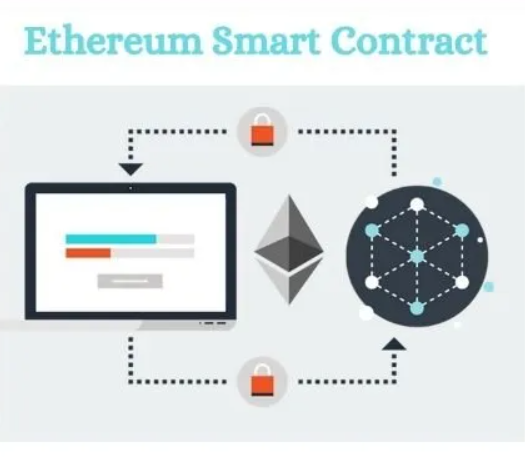bbc.towzdog.com – Ethereum Smart Contract Tutorial: A Step-by-Step Guide As blockchain technology continues to grow, Ethereum smart contracts have become one of the most popular and practical tools for decentralized applications (dApps), digital assets, and more. In this tutorial, we’ll break down the basics of Ethereum smart contracts, explain how they work, and walk you through creating your first smart contract on the Ethereum blockchain.
What is an Ethereum Smart Contract?
An Ethereum smart contract is a self-executing digital agreement written in code and deployed on the Ethereum blockchain. Unlike traditional contracts, smart contracts do not rely on intermediaries; they execute automatically when the agreed conditions are met. This unique feature of decentralization and automation makes smart contracts highly efficient and cost-effective for a wide range of applications.
Benefits of Ethereum Smart Contracts
Smart contracts offer several advantages over traditional agreements:
- Decentralization: Smart contracts operate on the Ethereum blockchain, which means they are decentralized and do not depend on a central authority.
- Transparency: Smart contracts are public and verifiable, providing transparency in transactions and reducing the chances of fraud.
- Cost Efficiency: Automating processes with smart contracts can reduce the cost of intermediaries and streamline business operations.
- Security: Deployed on the blockchain, smart contracts are secure, tamper-proof, and nearly impossible to alter once active.
Setting Up Your Environment for Ethereum Smart Contracts
Before creating a smart contract on Ethereum, you’ll need to set up a development environment. Here’s what you’ll need:
Tools for Ethereum Smart Contract Development
- Solidity: The main programming language for writing Ethereum smart contracts.
- Remix IDE: A web-based development environment where you can write, test, and deploy smart contracts.
- MetaMask: A digital wallet that interacts with the Ethereum network, allowing you to test and deploy your contract.
- Ganache: A local blockchain that simulates the Ethereum network, making it easier to test smart contracts without spending real ETH.
Installing the Essentials
- MetaMask: Download and install the MetaMask extension for your browser and set up an Ethereum wallet.
- Remix IDE: You can access Remix directly from your browser at Remix IDE.
- Ganache: Install Ganache on your computer to create a local blockchain environment for testing purposes.
With these tools set up, you’re ready to start writing your first Ethereum smart contract.
Writing Your First Ethereum Smart Contract in Solidity
In this section, we’ll walk you through writing a simple smart contract in Solidity, the main programming language for Ethereum smart contracts. We’ll create a contract that stores a number and allows users to update or retrieve it.
Step 1: Understanding Solidity Basics
Before writing the code, here are some essential concepts in Solidity:
- pragma: Used to specify the Solidity version for the contract.
- contract: A container for variables and functions that define the logic of the smart contract.
- functions: Contain the code that is executed when a specific task is called.
Step 2: Writing the Contract Code
Open Remix IDE and paste the following code to create your first Ethereum smart contract:
With this contract, you have created a basic Ethereum smart contract that can store and retrieve a value.
Deploying and Testing Your Ethereum Smart Contract
Once you’ve written your smart contract, it’s time to deploy it on a test network to see it in action.
Step 1: Compile the Contract in Remix
- In Remix IDE, go to the Solidity Compiler tab and click on Compile SimpleStorage.sol. This step will compile your code and make it ready for deployment.
Step 2: Deploy the Contract Using Ganache
To test your contract locally, use Ganache as your local blockchain:
- Launch Ganache and create a new workspace.
- In Remix IDE, go to the Deploy & Run Transactions tab, select Injected Web3 as the environment, and choose your Ganache network.
Step 3: Interact with the Contract
Once deployed, you can interact with your Ethereum smart contract directly in Remix:
- Use the
storeNumberfunction to store a new number in the contract. - Use the
retrieveNumberfunction to retrieve and view the stored number.
Use Cases of Ethereum Smart Contracts
Ethereum smart contracts are versatile and can be applied across various sectors. Here are some popular use cases:
1. Decentralized Finance (DeFi)
Smart contracts power DeFi applications, allowing users to borrow, lend, and trade without traditional financial intermediaries. DeFi protocols such as Uniswap and Aave rely on smart contracts to automate transactions securely.
2. Non-Fungible Tokens (NFTs)
NFTs are unique digital assets stored on the blockchain, and they’re managed by smart contracts. Platforms like OpenSea and Rarible use smart contracts to verify ownership and transfer NFTs between users.
3. Supply Chain Management
Smart contracts enhance transparency and traceability in supply chains by automating processes and recording transaction details. For instance, companies use smart contracts to track goods, ensuring they meet certain standards before moving through each stage of the supply chain.
Gas Fees and Optimization in Ethereum Smart Contracts
Each time you deploy or interact with a smart contract on Ethereum, you incur a gas fee, which is a transaction fee paid to miners who process and confirm your transactions.
What are Gas Fees?
- Gas Fees: Gas fees are calculated based on the computational complexity of the smart contract’s functions. Higher complexity means higher gas fees.
- Optimization: Writing efficient code can help reduce gas costs by minimizing unnecessary computation.
Tips for Optimizing Gas Costs
- Optimize Storage: Storing data on the Ethereum blockchain is costly, so use storage efficiently by keeping variables to a minimum.
- Use External Calls Sparingly: External calls (such as calling another contract) are more expensive than internal calculations.
- Minimize Contract Size: Larger contracts require more gas to deploy. Split contracts into smaller components when possible.
Ethereum Smart Contract Security
Smart contract security is a critical concern, as vulnerabilities can lead to significant financial loss. Here are common security issues and solutions for Ethereum smart contracts:
1. Reentrancy Attacks
A reentrancy attack happens when a malicious contract continuously calls a function in another contract, draining funds before the first function execution is complete.
Solution: Use the Checks-Effects-Interactions pattern to minimize the risk of reentrancy attacks.
2. Integer Overflows and Underflows
In Solidity, arithmetic operations can overflow, leading to unexpected results. An attacker can exploit this to manipulate values within your contract.
Solution: Use the SafeMath library, which checks for overflow and underflow errors.
Frequently Asked Questions (FAQs) on Ethereum Smart Contracts
Can Anyone Deploy a Smart Contract on Ethereum?
Yes, as long as you have an Ethereum wallet and enough ETH to cover gas fees, anyone can deploy a smart contract on the Ethereum blockchain.
Are Smart Contracts Legally Binding?
The enforceability of smart contracts depends on jurisdiction. In many cases, they can be considered legally binding if they meet the contract law requirements, but legal interpretation varies.
How Much Does It Cost to Deploy a Smart Contract?
The cost varies based on the gas fees at the time of deployment and the complexity of the contract. Deploying simple contracts may cost a few dollars, while complex contracts can cost significantly more.




